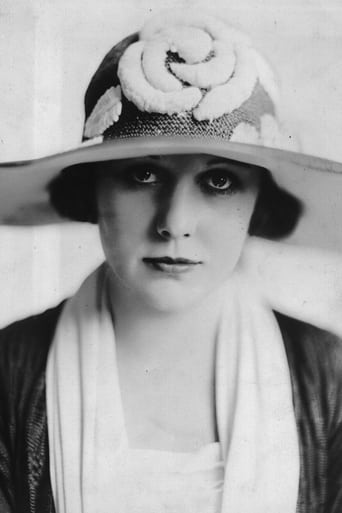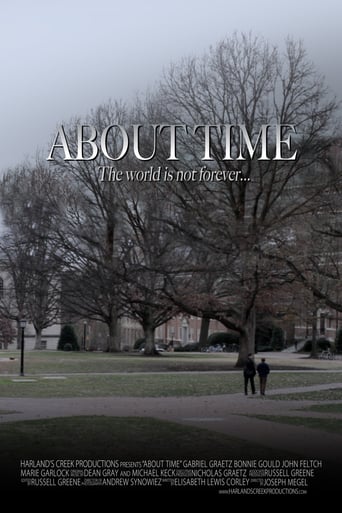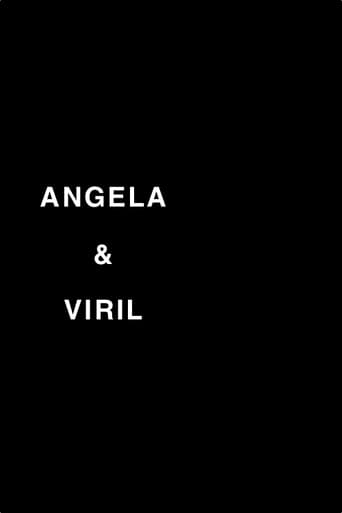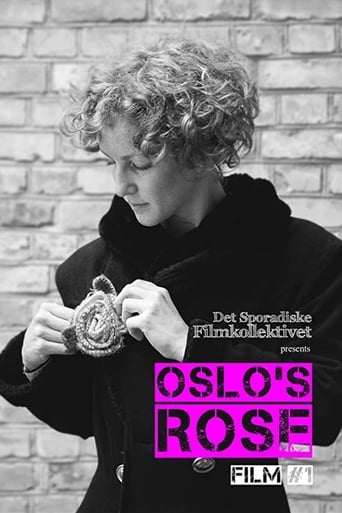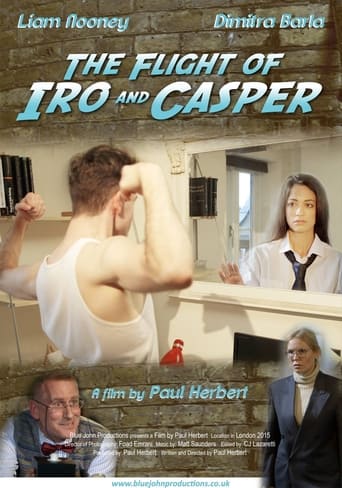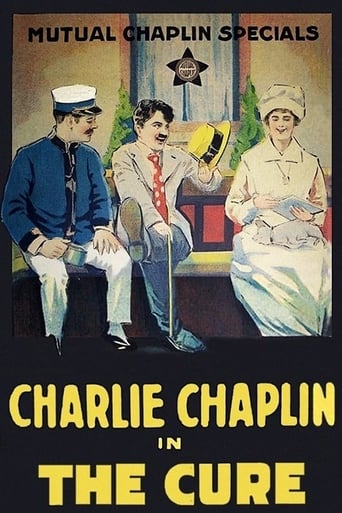
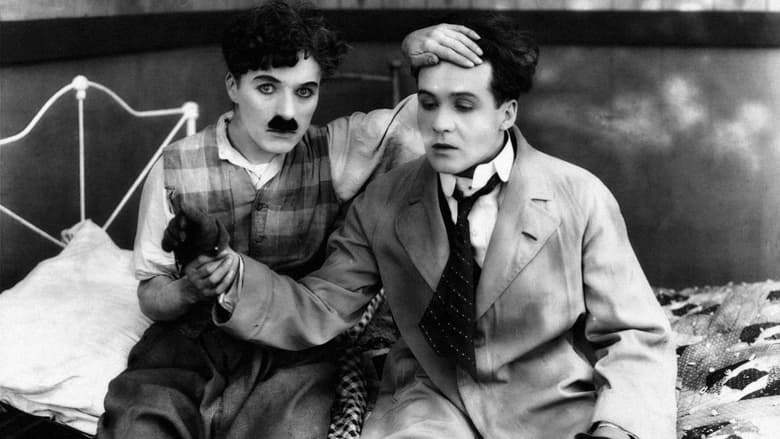
The Cure (1917)
An alcoholic checks into a health spa and his antics promptly throw the establishment into chaos.
Watch Trailer
Cast
Similar titles
Reviews
Beautiful, moving film.
An Exercise In Nonsense
Admirable film.
The film never slows down or bores, plunging from one harrowing sequence to the next.
Am a big fan of Charlie Chaplin, have been for over a decade now. Many films and shorts of his are very good to masterpiece, and like many others consider him a comedy genius and one of film's most important and influential directors. From his post-Essanay period after leaving Keystone, 'The Cure' is among the very best of his early output, one of his best from his Mutual period and one of his first classics. As said with many of his post-Keystone efforts, it shows a noticeable step up in quality though from his Keystone period, where he was still evolving and in the infancy of his long career. The Essanay and Mutual periods were something of Chaplin's adolescence period where his style had been found and starting to settle. Something that can be seen in 'The Cure'. The story is slight and slightly too simple but is at least discernible and is never dull, and does it while not being as too busy or manic.On the other hand, 'The Cure' looks good, not incredible but it was obvious that Chaplin was taking more time with his work and not churning out countless shorts in the same year of very variable success like he did with Keystone. Appreciate the importance of his Keystone period and there is some good stuff he did there, but the more mature and careful quality seen here and later on is obvious.'The Cure' is one of the funniest and most charming early efforts of Chaplin. It is hilarious with some clever, entertaining and well-timed slapstick and the charm doesn't get over-sentimental. It moves quickly and there is no dullness in sight. The second half is both hilarious and enchanting.Chaplin directs more than competently and the cinematic genius quality is emerging. He also, as usual, gives a playful and expressive performance and at clear ease with the physicality and substance of the role. The supporting cast acquit themselves well, with a charming Edna Purviance, their chemistry is sweet to watch, and Eric Campbell being both amusing and formidable.On the whole, great. 9/10 Bethany Cox
This time, Charlie Chaplin plays a drunk who has to spend some time in a health spa. Sure enough, he creates chaos everywhere he goes! "The Cure" was also one of Edna Purviance's early roles. The two of them have a couple of scenes together. But above all, this is an excuse for Chaplin to strut his stuff, and boy does he! It must have been weird for Chaplin, going as he did from being a poor boy in England to being an international superstar. Nonetheless, he gave us some of the greatest comedies of all time. That makes it all the more disgraceful that the US government - mired in McCarthyism - wouldn't let him reenter the country in 1952, forcing him to spend the rest of his life in exile. Fortunately, Chaplin got the last laugh: he won an Academy Award for lifetime achievement in 1972, and he remains one of the most beloved entertainers ever.
THE CURE (Mutual Studios, 1917), Written, directed and starring Charlie Chaplin, his tenth comedy short (20 minutes) for the Mutual studio, is one of his all time greats. For a title that indicates one to be set in a hospital with Charlie as an unruly patient who flirts with the nurses and drives his doctors crazy, in essence, it takes place in a sanitarium that wherever Charlie goes, trouble follows. For THE CURE, Chaplin breaks away from his traditional tramp character with derby and cane for straw hat, white suit and cane retained, stirring as much trouble as he can, intentionally or not, to those around him.The story opens at a resort with an assortment of female gossips gathered together seated around the health spring where enters the new resident, the drunken Charlie (Charlie Chaplin), arriving for a rest cure, to nearly fall into the water well on the ground. After being escorted to his room by a frail and thin bellboy, Charlie opens his crate that reveals an assortment of liquor bottles. Once the bottles are discovered with the bearded bellboy found drunk in Charlie's room, the superintendent (Frank J. Coleman) orders the bottles thrown out. The attendant (Albert Austin) takes him literally and throws the bottles out the window where they end up inside the water spring below. In the meantime, Charlie makes his rounds about the resort, encountering an attractive woman (Edna Purviance) being annoyed by the burly gout (Eric Campbell), thus, saving the day by becoming a big annoyance for the big man and hero to the girl. Later at the massage parlor, Charlie begins to have second thoughts of treatment when witnessing how the sadistic masseur (Henry Bergman) works on one of his customers. Following a series of unforeseen circumstances, Edna, whose about to meet with Charlie, discovers, to her disbelief, the refined residents and attendants having way too much fun for themselves in the lobby without knowing the reason why. And if that isn't enough!!!While there's not much plot nor character background development to go around, THE CURE is non-stop comedy, pure and simple. The carefully planned-out gags are enough to guarantee solid laughs with Chaplin stock character types in their proper roles for background support. As much as Chaplin is the sole attraction when it comes to both character and gags, Eric Campbell should not go unnoticed for his achievement in villainous comedy. Campbell, better known in later years as "Chaplin's Goliath," partakes in some of the greatest sight gags imaginable, including the revolving door, his reaction towards Charlie's misconducts involving his bandaged foot, his involvement with Charlie in both lobby and massage parlor, his trip down the stairs in a wheelchair, among others. Aside from Edna Purviance as Chaplin's frequent female co-star, other members of the cast include James T. Kelly, John Rand, Janet Miller Sully and Loyal Underwood.In the well documented three-part 1983 documentary, "Unknown Chaplin," there are some detailed moments capturing behind the scenes preparation for THE CURE, with Chaplin directing various sequences that were rehearsed and filmed, but not making it to the final print, and how changes to THE CURE developed into what has become one of Chaplin's finest gems, especially when properly scored on the musical soundtrack.When presented on public television in the sixties and seventies, this and other Chaplin's Mutual comedies (1916-17) were broadcast with sound effects and musical score taken from 1930s reissue prints. For THE CURE, underscoring consisted of current hit tunes of the day ranging from "Happy Feet" to "Happy Days Are Here Again." These reissue prints later became part of the Blackhawk/ Republic Home Video package dating back to the 1980s. In latter years, Chaplin's Mutual comedies were restored to accurate silent projection speed (25 minutes) with new orchestral score from KINO Video, the prints that have played on Turner Classic Movies (TCM premiere: December 6, 1999). After listening to different scores from various distributors, nothing comes off better than those orchestrated ones from Blackhawk for that bad scoring takes away the impact for such a fine comedy, considering how these twelve Chaplin shorts for Mutual are simply the cure for what ales you. (****)
Measured in terms of sheer belly-laughs The Cure may well be the funniest movie Charlie Chaplin ever made. Not one moment is given over to sentimentality about childhood trauma, unrequited love, poverty or anything of the sort; this time around, Chaplin is single-minded in his drive to make us laugh, and he achieves his goal with ruthless and exhilarating efficiency.The story's setting may require a bit of explanation for younger viewers. At the time this film was made there were a number of well-known health resorts in the U.S. and Europe built around mineral springs. It was fashionable for middle- and upper-class people to spend a week or two at these spas to address whatever health problems they might be struggling with, for it was believed that mineral water cured or at least alleviated a variety of ailments. The resorts were visited by well-to-do patients afflicted with everything from rheumatism, gout, or polio to chronic alcoholism, and someone in the latter category who went to a spa to get clean and sober was said to be "taking the cure."When Charlie arrives at the spa that is our setting, pushed in a wheeled deck-chair by a uniformed attendant and obviously still tipsy, we know right away that despite the familiar mustache he's not the Little Tramp we usually encounter. Here, though slightly disheveled, Charlie sports a dapper ensemble of light jacket, straw boater, and spotted tie, indicating that he's a respectable bourgeois citizen who has come to this place -- probably at the insistence of family or friends -- to dry out. It's soon apparent that he has no intention of changing his ways, however, for his wardrobe trunk is full of booze and he wastes no time in refreshing himself. When an attendant tries to ply him with mineral water he reacts with disgust, and after taking a sip rushes back to his room to wash the taste out of his mouth with liquor. Just to demonstrate that he's not entirely a wastrel, however, Charlie gallantly rescues a young lady (Edna Puviance) from the unwelcome attentions of an obnoxious man (Eric Campbell), and even sobers up long enough to go for a massage and a very brief dip in the spa's pool. Eventually, Charlie's stash of liquor is discovered by the resort's manager and inadvertently dumped into the spring. Soon, everyone in the place except for Charlie and Edna is drunk and disorderly, and Charlie must once again come to Edna's aid.The great sequences in this comedy begin almost immediately, when Charlie confronts a revolving door and has his first run-in with Eric Campbell, whose unpleasant personality determines that his gouty foot will be fair game for brutality thereafter. Campbell, who wears an especially nasty-looking beard, has a great moment when he appears behind Edna in the lobby, leering at her through a curtain like a crazed goblin. Things get a little risqué when Charlie misinterprets Eric's flirty gestures as meant for himself, but the real comic highpoint comes when Charlie heads for the pool and must fend off a beefy masseur (Henry Bergman). This sequence is absolutely hilarious no matter how many times you see it, and stands with the best work of Chaplin's career.Perhaps the synopsis of The Cure will sound distasteful to anyone who hasn't seen the film; and granted, attitudes towards substance abuse have changed over time. I maintain that Chaplin was well aware of the seriousness of his subject matter -- his own father died young as a result of alcoholism -- and that he did not take it lightly. The true subject of this film was the contemporary fashion for health resorts, and much of the humor derives from poking fun at the proponents of the spring's curative powers. We see just enough of the spa's administrative staff to get a sense of their self-righteousness, a well-meaning but pompous attitude suggesting that they know all the answers and hold the key to health and happiness. Charlie with his trunk-full of booze is a dangerously subversive element in this atmosphere, and it's his (almost accidental) overthrow of authority that's funny and exhilarating.The Cure is beautifully staged, expertly performed, and hilarious. Where health and happiness are concerned I'd say that viewing it is as restorative as the spring waters touted by the resort's staff in the film: it's good and good for you.

